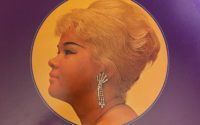Rihanna’s “Rude Boy”
The pandemic has generated bizarre physiological responses to the stress we’ve all been experiencing, including a rise in clumsiness. It turns out, constant anxiety affects spatial awareness—our ability to be aware of our surroundings—leading to all manner of bumps, drops, and mundane mayhem.
One way to cure clumsiness? Through dance. Apparently, making your body move rhythmically helps reestablish your brain-body connection, anchoring you physically to the spaces you inhabit. If body fogginess is the byproduct of a chaotic year, then rhythmic movement is the antidote.
The brain-body connection has long fascinated me. I tend to live in my head. Add to that the rigorous mental work that grad school primed me to do, which I carry out still, and my brain often overwhelms its side of the partnership. I try to balance that out with physical activity, which itself feeds into a healthy brain: I workout, I walk as much as I can (doing my darnedest to exemplify the “excellent walker” barb Mrs. Hurst hurls at Lizzy in Pride & Prejudice), and I dance.
I love to dance so much that over a decade ago, I went so far as to become a Zumba instructor shortly before it exploded into a craze. By the time I stopped teaching there was a glut of instructors, but when I first moved to Baton Rouge, the local gyms needed more help to meet the growing demand, so I completed the requisite training and began leading my own class.
It started slow—Tuesdays and Thursdays at one of the less-attended YMCAs in the area—but word soon spread, and by the end of my tenure some three years later, I was teaching four classes each week at the number two branch, including leading the downtown Y’s weekly outdoor summer class and co-teaching the Varsity Theater’s nightclub Zumba.
Zumba offered readymade choreography for instructors, but I liked to blend those prepared offerings with some of my own fancy footwork, and one of my favorite “originals” became Rihanna’s 2010 hit “Rude Boy.” I must’ve played it at least once a week over the years I taught at the Y. And no one batted an eye. They shimmied with me, circling their hips, and feeling that magnanimous connection that exists between rhythm and physicality, when a beat practically catches you.
I don’t know why management let me play it. From the song’s outset, the lyrics don’t try to wink at anything—they scream it. “Come on rude boy boy, can you get it up?/Come on rude boy boy is you big enough?” Rihanna sings, as if she’s just kicked down the bedroom door and arched an eyebrow. The steel drum synths add to the song’s island vibe, which updates the dancehall tradition, before dipping down into a distorted bass thump practically designed for grinding.
I blasted it throughout the Y and my class participants loved it. “Take it take it, baby baby, take it take it, love me love me,” Rihanna sang. And they did.
And then all that dance faded into the background. I moved, started a new job, and forgot about the hours and hours I spent creating and learning new routines for salsa and merengue and cumbia and samba. Somewhere in that time, “Rude Boy” also became a thing of the past. Instead, I became smitten with Rihanna’s 2016 sex-on-a-stick album ANTI.
The brain codes rote activities differently than it does facts or autobiographical memory. Once you learn a task, the brain shifts that memory to another part where it’s less consciously executed. “Muscle memory,” therefore, is not about your body storing a memory of how to do a task, but about how once you learn a movement or other kind of repetitive activity, you can perform it almost without thought.
Recently, I was out for a walk when “Rude Boy” popped up on the 2010s playlist I had going. Suddenly, all of those past Zumba classes came rushing back. But, I wondered, could I remember my routine to the song? As it turns out, yes indeed.
My brain searched for the moves, their order. One right step unlocked the entire thing as if it hadn’t been nearly 10 years since I last danced it. From “Rude Boy,” I fell down the rabbit hole: all the salsas and merengues and reggaetons, including my favorite tracks, Celia Cruz’s “La Vida Es Un Carnaval,” T-Pain’s “Booty Wurk,” and my cool down song, “Yo No Se Manana,” which apparently I still know the lyrics to even though I don’t speak Spanish. I must have danced for an hour under the setting sun, feeling a sort of exquisiteness all the more precious for its rarity these days.
The rhythms lived in my body still, though they’d been dormant, buried under the stress of a year that left my brain-body connection heavily weighted toward the former. At a time when the battle we’ve faced has been waged in the body, I celebrated the exuberant movement that resides in mine, side-stepping and twirling outdoors, and feeling for a fleeting moment that animating spark they call joy. “Giddy up, giddy up, giddy up, babe.”



